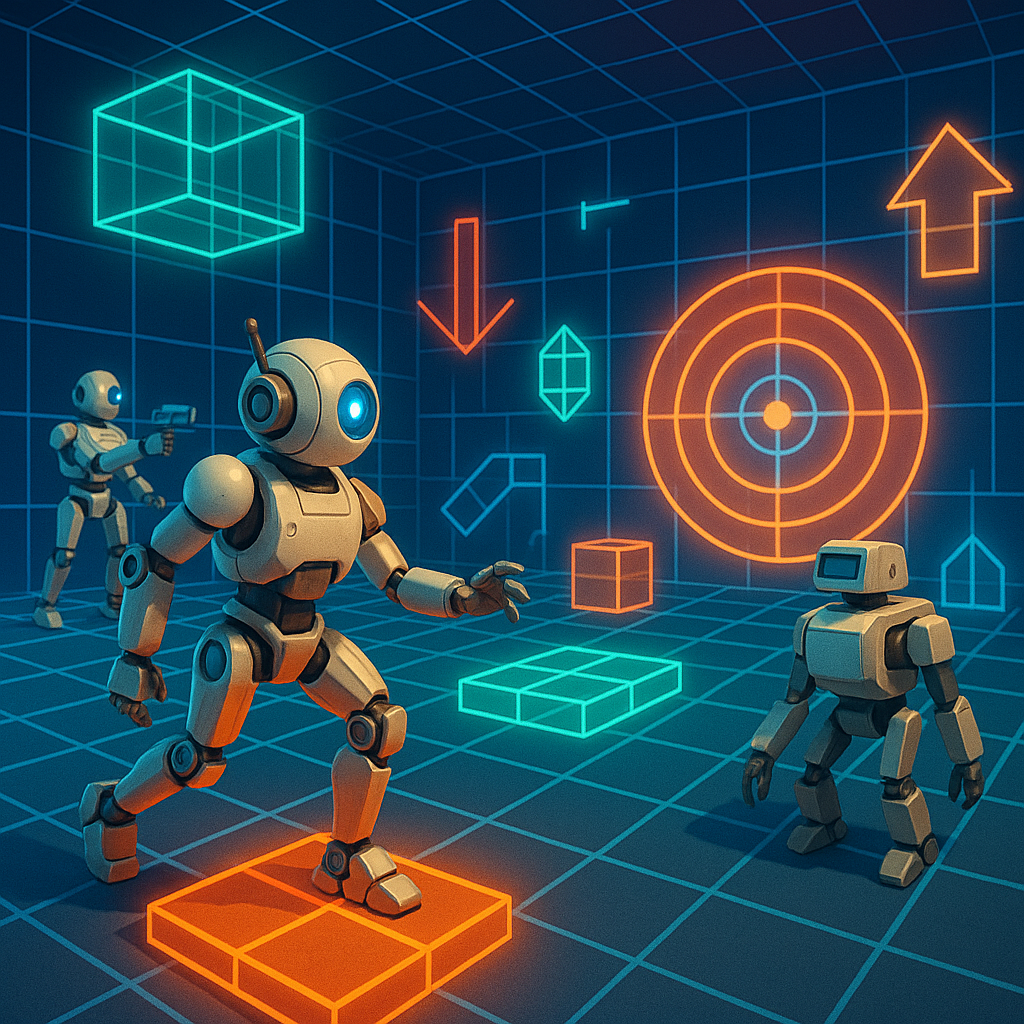Generative AI Boosts Realistic Virtual Robot Training
MIT and Toyota developed a generative AI tool to create diverse, realistic virtual environments for robot training, using diffusion models and Monte Carlo tree search to enhance physical accuracy and interaction scenarios.
AITECHNOLOGYARTIFICIAL INTELLIGENCE
Eric Sanders
10/12/20253 min read


How Generative AI is Revolutionizing the Way Robots Learn to Navigate the Real World
When it comes to training robots, the phrase "practice makes perfect" takes on a whole new dimension. Traditionally, roboticists have relied on painstakingly crafted virtual environments or hours of real-world trial and error to prepare machines for the chaotic unpredictability of everyday settings. But what if robots could train in countless diverse, highly realistic scenarios without ever leaving the digital realm? Thanks to a groundbreaking collaboration between MIT and Toyota, that future is no longer a distant dream—it’s rapidly becoming reality.
Why Traditional Robot Training Falls Short
Robots live and die by their ability to perceive and interact with their environments. Whether it’s a factory arm sorting parts or an autonomous vehicle navigating city streets, the challenge has always been to prepare these machines for the messy complexity of the physical world.
Historically, this has meant either:
- Creating highly detailed but limited virtual environments.
- Collecting mountains of real-world data through exhaustive trial runs.
- Using simplified simulations that fail to capture the nuance of real-world physics.
Each approach carries serious compromises, either in scale, realism, or safety. What if there was a way to create virtual training grounds as rich and varied as the real world but infinitely scalable and tailored for robot learning?
A New Frontier in Robot Training
MIT’s Computer Science and Artificial Intelligence Laboratory (CSAIL), partnering with Toyota Research Institute, has introduced a generative AI framework designed specifically to diversify and enhance robot training environments. This isn’t just another simulation tool. It’s fundamentally rethinking how robots acquire experience by leveraging cutting-edge methods in generative diffusion models and search algorithms.
The core idea is simple but powerful: instead of manually designing or collecting environments, use generative AI to create countless realistic and physically accurate virtual settings that robots can explore, interact with, and learn from.
How Does This New Tool Work?
The tool combines two sophisticated technologies:
- Diffusion Models: These are generative AI models capable of “imagining” highly realistic 3D scenes from scratch. Unlike older generative methods (like GANs), diffusion models produce more detailed and physically plausible environments.
- Monte Carlo Tree Search (MCTS): This algorithm helps the AI explore possible interaction scenarios within generated scenes, optimizing the physical accuracy and usefulness for training purposes. Essentially, it simulates how a robot might interact with objects and obstacles to identify the most valuable training experiences.
Together, these components allow for the automatic generation of richly varied environments complete with physical properties, object arrangements, and interaction contexts—something no previous system has been able to do at scale.
Toward Robots That Can Adapt and Thrive
The implications are profound. Robots trained with this technology can develop a much deeper understanding of the physical world, gaining exposure to situations that traditional training — either real or simulated — can’t replicate easily.
This includes:
- Variations in lighting, texture, and object placement.
- Complex manipulation tasks involving fragile or irregular objects.
- Navigation through cluttered or dynamic settings.
One of the lead researchers pointed out, “By diversifying the training grounds, we ensure that robots are not just memorizing fixed scenarios but truly learning to generalize and adapt.”
What Will This Change for the Future of Robotics?
- Faster Development Cycles: Robots can be prepared for deployment with less real-world testing, reducing risk and cost.
- Improved Real-World Performance: Greater diversity in training equips robots to handle unexpected challenges.
- More Autonomous Learning: Robots could continuously self-train in virtual environments tailored automatically to their evolving skill levels.
This fusion of generative AI and robotics signals a future where machines improve themselves faster and more reliably than ever before.
What Can We Apply Today?
While the research focuses on robotics, the core principles around generative AI and training generalization hold lessons for many fields. Here are a few takeaways worth considering:
- Diversity in Training Data Is Crucial: Whether training AI or humans, encountering varied, realistic scenarios drives adaptability.
- Combining Generative Models with Strategic Search Yields Better Outcomes: Leveraging exploration algorithms like MCTS can optimize the usefulness of AI-generated content.
- Physical Realism Matters: Close attention to real-world physics enhances transferability from virtual to actual application environments.
For entrepreneurs, developers, or educators, thinking beyond narrow, repetitive patterns and embracing diverse, generative approaches will pay dividends.
Closing Thoughts
This breakthrough speaks to a deeper aspiration: creating machines that don’t just function but can learn, grow, and adapt in ways reminiscent of human experience. As robots become more capable and independent, we edge closer to a world where the line between digital training ground and physical existence blurs.
Imagine a robot caregiver confidently navigating the unpredictable home environment because it’s “seen” hundreds of variations virtually—variants no human trainer could ever replicate in a lifetime.
Who will benefit the most when robots learn not just to execute but to understand their surroundings creatively and reliably? And how might this shift reshape our relationship with technology in the years ahead?
The future of robotics training is being written not on assembly lines or test labs but deep inside generative AI models that dream up worlds for robots to explore. Will we be ready to embrace what comes next?
Efficiency
Transform your workflows and reclaim your time.
Contact Us
Need A Custom Solutions? Lets connect!
eric.sanders@thedigiadvantagepro.com
772-228-1085
© 2025. All rights reserved.
